Monthly Archives: July 2018
 When dealing with one of the world’s more horrible murdering dictators, armies will try just about anything to take them down. Adolf Hitler seemed to be one of those dictators who just couldn’t be taken down. He even flaunted it in the face of his enemies, sending it across the airways, that he was still alive, even after they tried to kill him again. July 21, 1944, was one of those times when Adolf Hitler took to the airwaves to announce that the attempt on his life has failed and that “accounts will be settled.” Not only was Hitler good at dodging a bullet, but he was arrogant too.
When dealing with one of the world’s more horrible murdering dictators, armies will try just about anything to take them down. Adolf Hitler seemed to be one of those dictators who just couldn’t be taken down. He even flaunted it in the face of his enemies, sending it across the airways, that he was still alive, even after they tried to kill him again. July 21, 1944, was one of those times when Adolf Hitler took to the airwaves to announce that the attempt on his life has failed and that “accounts will be settled.” Not only was Hitler good at dodging a bullet, but he was arrogant too.
On this particular day, Hitler had survived the bomb that was meant to take his life. He didn’t get off unscathed, however. Hitler suffered punctured eardrums, some burns and minor wounds, but nothing that would keep him from regaining control of the government and finding the rebels. In fact, it only took a mere 11½ hours, to put down the coup d’etat, that was supposed to accompany the planned assassination of Hitler. In Berlin, Army Major Otto Remer, believed to be apolitical by the conspirators and willing to carry out any orders given him, was told that the Fuhrer was dead and that he, Remer, was to arrest Joseph Goebbels, Minister of Propaganda. But Goebbels had news for Remer.  Hitler was alive. He proved it, by getting him on the phone, because the rebels had forgotten to cut the phone lines. Hitler immediately gave Remer direct orders to put down any army rebellion and to follow only his orders or those of Goebbels or Himmler. Remer obeyed and let Goebbels go. The SS then snapped into action, arriving in Berlin, which was now in chaos, just in time to convince many high German officers to remain loyal to Hitler.
Hitler was alive. He proved it, by getting him on the phone, because the rebels had forgotten to cut the phone lines. Hitler immediately gave Remer direct orders to put down any army rebellion and to follow only his orders or those of Goebbels or Himmler. Remer obeyed and let Goebbels go. The SS then snapped into action, arriving in Berlin, which was now in chaos, just in time to convince many high German officers to remain loyal to Hitler.
What followed forth rebels was hideous. Arrests, torture sessions, executions, and suicides were the order of the day. Count Claus von Stauffenberg, was the man who actually planted the explosive in the room with Hitler. He had insisted to his co-conspirators that “the explosion was as if a 15 millimeter shell had hit. No one in that room can still be alive.” But it was Stauffenberg who would not be alive for much longer. He was shot dead the very day of the attempt by a pro-Hitler officer. There was no trial, and no second chance given.  The plot was completely demolished.
The plot was completely demolished.
Then, Hitler set out to restore calm and confidence to the German civilian population. At 1am on July 21, Hitler’s voice broke through the radio airwaves: “I am unhurt and well…. A very small clique of ambitious, irresponsible…and stupid officers had concocted a plot to eliminate me… It is a gang of criminal elements which will be destroyed without mercy. I therefore give orders now that no military authority…is to obey orders from this crew of usurpers… This time we shall settle account with them in the manner to which we National Socialists are accustomed.” The attempt on his life was over, and Hitler would live…to die another day.

 Few people know that within the United States, there lies a sovereign, independent nation, that is located in and completely surrounded by territory of the United States. The nation is called Molossian, and while this nation is not recognized by any other nation, and certainly not by the United States, its founder, Kevin Baugh, born on July 30, 1962, has declared it a nation since 1977, when he claimed it as a micronation within the United States. It is also known as the Republic if Molossia. Its headquarters is located at Kevin’s home near Dayton, Nevada. On April 16, 2016, Baugh even hosted a tour of the Republic of Molossia, sponsored by the website Atlas Obscura. Kevin Baugh continues to pay property taxes, or “foreign aid” on the land to Storey County (the recognized local government). The county lists the property identified as being within the county as Manufactured Home Converted to Real Property. Kevin Baugh has stated, “We all want to think we have our own country, but you know the U.S. is a lot bigger.”
Few people know that within the United States, there lies a sovereign, independent nation, that is located in and completely surrounded by territory of the United States. The nation is called Molossian, and while this nation is not recognized by any other nation, and certainly not by the United States, its founder, Kevin Baugh, born on July 30, 1962, has declared it a nation since 1977, when he claimed it as a micronation within the United States. It is also known as the Republic if Molossia. Its headquarters is located at Kevin’s home near Dayton, Nevada. On April 16, 2016, Baugh even hosted a tour of the Republic of Molossia, sponsored by the website Atlas Obscura. Kevin Baugh continues to pay property taxes, or “foreign aid” on the land to Storey County (the recognized local government). The county lists the property identified as being within the county as Manufactured Home Converted to Real Property. Kevin Baugh has stated, “We all want to think we have our own country, but you know the U.S. is a lot bigger.”
Molossia was a kingdom for over twenty years, followed by a People’s Democratic Republic, which then became today’s Republic in 1999 XXII. His Excellency, President Kevin Baugh is the current leader of the tiny nation. The nation encompasses a total area of 11.3 acres, Molossia is one of the smallest nations on earth, boasting just 27 citizens, but they all consider themselves citizens of Molossia for sure. A sense of humor characterizes most Molossian people, which makes sense, because you would have to have a sense of humor when you live in a nation that nobody else thinks exists. This coupled with the casual and comfortable western lifestyle, makes Molossia an enjoyable place to visit…should you ever find yourself in the area of Dayton, Nevada, about 28 miles from Reno. It is also about 28 miles from Lake Tahoe, and minutes away from Virginia City. There are some things you need to know before you decide to visit the Republic of Molossia. First, you can only visit by appointment, and upon arrival, you will have to go through customs. Another interesting fact is that the Republic of Molossia has its own currency, called the valora, which is subdivided into 100 futtrus and pegged to the relative value of Pillsbury cookie dough. Cookie dough is stored in an outbuilding called the Bank of Molossia, from which valora coins made from gambling chips and printed banknotes are sold. The Republic of Molossia also has its own Navy, Naval Academy, Space Program, Railroad, Postal Service, Bank, tourist attractions, measurement system, holidays, online movie theater, online radio station, and even its own time zone, although none of these things are recognized outside of Molossia.
The origins of Molossia come from a micronation childhood project, called The Grand Republic of Vuldstein, founded by Baugh and James Spielman on May 26, 1977, located in the same place as present day Molossia. Vuldstein was run and populated by King James I (Spielman), and Prime Minister (Baugh), although Spielman soon left “Vuldstein” and moved elsewhere, and more likely outgrew the childhood fantasy. Baugh used this name for several nomadic kingdoms as he traveled to Europe. From 1998 to 1999, Molossia was a member of the United Provinces of Utopia 3. On September 3, 1999, Baugh created the Republic of Molossia as a successor country to Vuldstein, and declared himself president. On November 13, 2012, Kevin Baugh created a petition on the Whitehouse.gov We the People website to obtain official recognition of his micronation. He declared that at the last census, held on March 18, 2012, 27 inhabitants lived in Molossia. It is the Baugh family’s primary place of residence, and the site of Molossia’s designated capital, Baughston. Baughston was renamed from Espera on 30 July 2013 to commemorate President Baugh’s 51st birthday. And true to any sovereign nation, the Republic of Molossia claims to be at war with East Germany. What is a nation without a war? The Republic of Molossia alleges that East Germany is responsible for military drills performed by Kevin 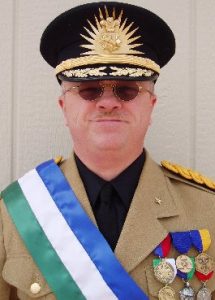
 Baugh while stationed with the United States Military in West Germany, and therefore are also responsible for the resulting lack of sleep. While East Germany formally ceased to exist in 1991 via the Treaty on the Final Settlement with Respect to Germany, Molossia argues that “Ernst Thälmann Island, through dedication by Cuba to Weimar German politician Ernst Thälmann and lack of mention in the Treaty on the Final Settlement or by the nation of Cuba either, is still East German land, allowing the war to continue.” I can’t say why Baugh believes that he can have a sovereign nation within the borders of an already sovereign nation, but apparently he does.
Baugh while stationed with the United States Military in West Germany, and therefore are also responsible for the resulting lack of sleep. While East Germany formally ceased to exist in 1991 via the Treaty on the Final Settlement with Respect to Germany, Molossia argues that “Ernst Thälmann Island, through dedication by Cuba to Weimar German politician Ernst Thälmann and lack of mention in the Treaty on the Final Settlement or by the nation of Cuba either, is still East German land, allowing the war to continue.” I can’t say why Baugh believes that he can have a sovereign nation within the borders of an already sovereign nation, but apparently he does.
 Most people know what the paddy wagon is, and nobody wants to end up in one. An old term for arresting vehicle, the term gets it’s roots from the Irish. Apparently, many of the police officers in early America were of Irish descent. According to Dictionary.com, “Irishman,” 1780, slang, from the pet form of the common Irish proper name Patrick (Irish Padraig). It was in use in black slang by 1946 for any “white person.” Paddy wagon is 1930, perhaps so called because many police officers were Irish. Paddywhack (1881) originally meant “an Irishman.” I suppose that many would look at this slang name for police officer as disrespectful, and they might be right, but no more disrespectful that pig or even cop. Nevertheless, the Paddy Wagon was just a
Most people know what the paddy wagon is, and nobody wants to end up in one. An old term for arresting vehicle, the term gets it’s roots from the Irish. Apparently, many of the police officers in early America were of Irish descent. According to Dictionary.com, “Irishman,” 1780, slang, from the pet form of the common Irish proper name Patrick (Irish Padraig). It was in use in black slang by 1946 for any “white person.” Paddy wagon is 1930, perhaps so called because many police officers were Irish. Paddywhack (1881) originally meant “an Irishman.” I suppose that many would look at this slang name for police officer as disrespectful, and they might be right, but no more disrespectful that pig or even cop. Nevertheless, the Paddy Wagon was just a 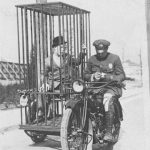 vehicle used to transport prisoners to jail. These days, unless it is a big group being arrested at one time, paddy wagons aren’t used much, but they used to be much more common. I’m sure there were many outlaws who knew the inside of a paddy wagon well…at least the ones who were’t very good at their skill. Those who were good at it usually avoided the paddy wagons.
vehicle used to transport prisoners to jail. These days, unless it is a big group being arrested at one time, paddy wagons aren’t used much, but they used to be much more common. I’m sure there were many outlaws who knew the inside of a paddy wagon well…at least the ones who were’t very good at their skill. Those who were good at it usually avoided the paddy wagons.
Back in the Old West, paddy wagons really were wagons, but then so was every other mode of personal transportation, and many forms of business transportation. With the invention of the motorized vehicle, came a different type of Paddy Wagon too. And with the invention of the motorcycle, came an even more unusual type of Paddy Wagon. I 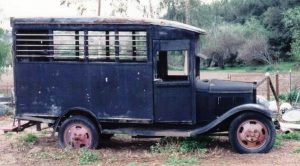 can’t really imagine being taken to jail in a cage attached to a motorcycle, but there were those who were taken that way. This seemed to be common in Los Angeles, which makes sense, because many other places would be too cold for that. Still, imagine being hauled to jail in a cage for all the locals to see. No privacy there. I suppose that would be a special type of punishment for sure, the crime and the embarrassment. Or maybe criminals don’t get embarrassed. I can’t really say. All I know is that if I ever had to be hauled to jail in a Paddy Wagon, I would prefer the type we have today, with no windows.
can’t really imagine being taken to jail in a cage attached to a motorcycle, but there were those who were taken that way. This seemed to be common in Los Angeles, which makes sense, because many other places would be too cold for that. Still, imagine being hauled to jail in a cage for all the locals to see. No privacy there. I suppose that would be a special type of punishment for sure, the crime and the embarrassment. Or maybe criminals don’t get embarrassed. I can’t really say. All I know is that if I ever had to be hauled to jail in a Paddy Wagon, I would prefer the type we have today, with no windows.
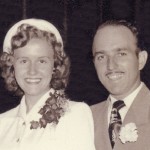
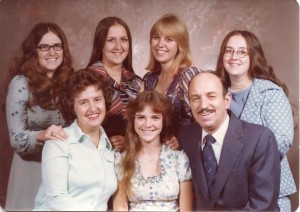 It was 65 years ago, when my parents, Allen and Collene Spencer said “I do” and began their life journey together. Theirs was a match made in Heaven and one that continued for the rest of their lives. They knew almost from the day they met, that they had found their soulmate. Of course, my mom was too young at that time to get married, so they had to wait, but their love was worth waiting for. Finally, when my mom was almost 18, they ties the knot, and immediately moved to Superior, Wisconsin to start their family. As often happened in those days, they were quickly pregnant, and a week less than 10 months later, my sister, Cheryl Masterson was born. I arrived a little less than 2 years later; my sister Caryl Reed a little more than 3 years later; my sister Alena Stevens a little more that 2 years after Caryl; and our youngest sister, Allyn Hadlock 1 year and 8 months after Alena. By the time my sister Caryl arrived, our family had moved back to Casper, Wyoming.
It was 65 years ago, when my parents, Allen and Collene Spencer said “I do” and began their life journey together. Theirs was a match made in Heaven and one that continued for the rest of their lives. They knew almost from the day they met, that they had found their soulmate. Of course, my mom was too young at that time to get married, so they had to wait, but their love was worth waiting for. Finally, when my mom was almost 18, they ties the knot, and immediately moved to Superior, Wisconsin to start their family. As often happened in those days, they were quickly pregnant, and a week less than 10 months later, my sister, Cheryl Masterson was born. I arrived a little less than 2 years later; my sister Caryl Reed a little more than 3 years later; my sister Alena Stevens a little more that 2 years after Caryl; and our youngest sister, Allyn Hadlock 1 year and 8 months after Alena. By the time my sister Caryl arrived, our family had moved back to Casper, Wyoming.
Our parents gave their daughters a wonderful life. We may not have been rich, but we were rich in love and happiness. We traveled, we were raised to have good Christian values, and we were raised to know the value of money and hard work. It doesn’t get better than that. We grew up to be responsible citizens and my parents were proud of each and every one of their daughters. When my sisters and i grew up, Mom and Dad were blessed with 16 grandchildren, then gained 22 great grandchildren, with one more arriving in late August. They also have 5 great great grandchildren. What a crew they started all those years ago!!
Mom and Dad led a blessed life, through all their years together, and that made my sisters and me very blessed too. Our home was always filled with joy and happiness. When problems arose, Dad and Mom always 
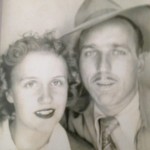 had a way to fix them. I think a strong bond and two hearts in agreement can go a long way together. Being in agreement is the biggest key to a marriage, even if you don’t agree on every matter, just agreeing to work things out is huge. Mom and Dad had that. They showed us how to live, by the way they lived. And that is the best blessing they could have given us. My only regret now is that they are not here with us anymore. Today would have been their 65th anniversary. Happy anniversary in Heaven, Mom and Dad. We love and miss you both so very much.
had a way to fix them. I think a strong bond and two hearts in agreement can go a long way together. Being in agreement is the biggest key to a marriage, even if you don’t agree on every matter, just agreeing to work things out is huge. Mom and Dad had that. They showed us how to live, by the way they lived. And that is the best blessing they could have given us. My only regret now is that they are not here with us anymore. Today would have been their 65th anniversary. Happy anniversary in Heaven, Mom and Dad. We love and miss you both so very much.

 These days, long term marriages are rare, but they can be done. It takes work, an understanding of what your spouse is going through on a daily basis, common goals, and most of all prayer. I know people would dispute that last one, but as I am a Christian, I believe that is what it takes, whether it is the couple praying, or their family praying for them. Some things should be handled with prayer, because getting along with a person day in and day out, is not always easy, as any married couple will tell you.
These days, long term marriages are rare, but they can be done. It takes work, an understanding of what your spouse is going through on a daily basis, common goals, and most of all prayer. I know people would dispute that last one, but as I am a Christian, I believe that is what it takes, whether it is the couple praying, or their family praying for them. Some things should be handled with prayer, because getting along with a person day in and day out, is not always easy, as any married couple will tell you.
Nevertheless, my daughter, Corrie Petersen and her husband Kevin are one of those couples who have beaten the odds, and today, they celebrate their 25th or Silver Anniversary. I remember their wedding like it was yesterday, because in a mother’s heart, that is exactly how it feels. They were to kids, and that’s a fact. Corrie was just two weeks past her 18th birthday, and Kevin was not quite 22. The first thought that comes to anyone’s mind is that there was no way this marriage had a chance, but these two kids loved each other so much. They had dated since Corrie was just 15 years old, and they had been engaged for a year and two weeks, since they got engaged on her 17th birthday. They were perfect for each other from the start, and never have I seen two people who were closer soulmates at such a young age. You just can’t mess with these matches made in Heaven, and that is what they were…a match made in Heaven.
Now, suddenly, here we are, 25 years later, and these two kids…who will always be kids to me…are still going strong. They are parents, and now have a new granddaughter, and they are as happy as they can be. They are supportive of each other as each one works toward their own goals for their lives. They are supportive of each other as they struggle with things that are difficult, knowing that everyone has struggles. No life is perfect, but when you have a good support system, you can do anything you set your mind to…be it health, career, 
 finances, or any other challenge people can face. You see, it isn’t the marriage that has no challenges that lasts, because in reality, there is no such thing. It is rather the marriage that meets its challenges head on, faces them with courage and compassion, and comes out the other side better for having made the journey that lasts. That is the kind of marriage Corrie and Kevin have, and that is why it has lasted. Today is Corrie and Kevin’s 25th wedding anniversary. Happy Silver Anniversary Corrie and Kevin!! Congratulations to you both…you made it!! Have a great day!! We love you both!!
finances, or any other challenge people can face. You see, it isn’t the marriage that has no challenges that lasts, because in reality, there is no such thing. It is rather the marriage that meets its challenges head on, faces them with courage and compassion, and comes out the other side better for having made the journey that lasts. That is the kind of marriage Corrie and Kevin have, and that is why it has lasted. Today is Corrie and Kevin’s 25th wedding anniversary. Happy Silver Anniversary Corrie and Kevin!! Congratulations to you both…you made it!! Have a great day!! We love you both!!

 About 47 years ago, while on a family vacation to California, my brother-in-law, Ron Schulenberg decided that he wanted to stay in California, and when asked what they should do about his older brother, Bob, Ron said,”just send for him in the mail.” Unfortunately, Ron was a little late in history for his cool little idea. You see, while the mailing of children was a practice between 1913 and 1920, Ron was living in the year 1971. Nevertheless, while Ron’s idea was workable, he cannot be credited with the original idea.
About 47 years ago, while on a family vacation to California, my brother-in-law, Ron Schulenberg decided that he wanted to stay in California, and when asked what they should do about his older brother, Bob, Ron said,”just send for him in the mail.” Unfortunately, Ron was a little late in history for his cool little idea. You see, while the mailing of children was a practice between 1913 and 1920, Ron was living in the year 1971. Nevertheless, while Ron’s idea was workable, he cannot be credited with the original idea.
When the Post Office’s Parcel Post service officially began on January 1, 1913, the new service suddenly allowed millions of Americans access to all kinds of goods and services. That was a great thing, but as is often the case, it almost immediately had some unintended consequences. Believe it or not, some parents decided to send their children through the mail. Just a few weeks after Parcel Post began, an Ohio couple named Jesse and Mathilda Beagle “mailed” their 8-month-old son James to his grandmother, who lived just a few miles away in Batavia. It seems that Baby James was just under the 11-pound weight limit for packages sent via Parcel Post, and his “delivery” cost his parents only 15 cents in postage. Of course, being the “responsible parents” they were, they did insure him for $50. As you can imagine, this “delivery” made the newspapers very quickly. While you might have thought about the outrage that would have come from such an action these days, it did not. In fact, for the next several years, similar stories would occasionally surface as other parents followed suit. One famous case, on February 19, 1914, was that of a four year old girl named Charlotte May Pierstorff was “mailed” via train from her home in Grangeville, Idaho to her grandparents’ house about 73 miles away. Nancy Pope, who wrote for the National Postal Museum wrote the story, which became so legendary, that it was even made into a children’s book, Mailing May. Luckily, little May wasn’t unceremoniously shoved into a canvas sack along with the other packages. As it turns out, she was accompanied on her trip by her mother’s cousin, who worked as a clerk for the railway mail service, according to United States Postal Service historian Jenny Lynch. It’s likely that his influence (and his willingness to chaperone his young cousin) is what convinced local officials to send the little girl along with the mail.
In the next few years, stories about children being mailed through rural routes would crop up from time to time as people pushed the limits of what could be sent through Parcel Post. The reason being that postage was cheaper than a train ticket. One of the most overlooked, yet most significant innovations of the early 20th century might be the Post Office’s decision to start shipping large parcels and packages through the mail. While private delivery companies flourished during the 19th century, the Parcel Post dramatically expanded the reach of mail-order companies to America’s many rural communities, as well as the demand for their products. Over the years, these stories continued to surface from time to time as parents occasionally managed to slip their children through the mail thanks to rural workers willing to let it slide. Finally, on June 14, 1913, several newspapers including the Washington Post, the New York Times, and the Los Angeles Times all ran stories stating the the postmaster had officially decreed that children could no longer be sent through the mail. But while this announcement seems to have stemmed the trickle of tots traveling via post, Lynch says the story wasn’t entirely accurate. Soon, it became obvious that this bizarre practice had to be stopped, and on June 13, 1920, notice was given that the Post Office would no longer let children be sent through the mail. While child 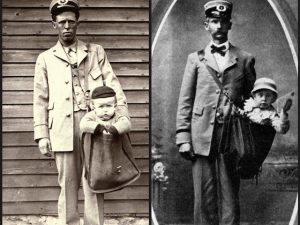
 mailing stopped, there was a time when “Mail carriers were trusted servants, and that goes to prove it. There are stories of rural carriers delivering babies and taking care of the sick. Even now, they’ll save lives because they’re sometimes the only persons that visit a remote household every day.” Still, I don’t think I would mail my child somewhere. Thankfully, there are more travel options for children these days than pinning some postage to their shirts and sending them off with the mailman.
mailing stopped, there was a time when “Mail carriers were trusted servants, and that goes to prove it. There are stories of rural carriers delivering babies and taking care of the sick. Even now, they’ll save lives because they’re sometimes the only persons that visit a remote household every day.” Still, I don’t think I would mail my child somewhere. Thankfully, there are more travel options for children these days than pinning some postage to their shirts and sending them off with the mailman.
 Lots of people would love to find a gold mine, stake a claim, and get rich. And if that didn’t work, they would love to stumble on a hidden or long lost treasure. Of course, for most of us that will never happen but that does not mean that those things don’t exist. In 1845, a group of pioneers were traveling by wagon train from Iowa to Oregon. They got as far as the Malheur River about a mile below the present-day Vale, Colorado. They had already traveled about 1,500 miles. They were tired and more than ready to reach their destination, they camped at a spring to rest for the night. The trip had been hard, and they had lost several oxen that had apparently died from poison. When one of the members of the party examined a carcass, his hand was infected and he too died. Tempers flaring within the group of travelers. It was time to bring their journey to a close. They were tough, but this was possibly more than they had bargained for.
Lots of people would love to find a gold mine, stake a claim, and get rich. And if that didn’t work, they would love to stumble on a hidden or long lost treasure. Of course, for most of us that will never happen but that does not mean that those things don’t exist. In 1845, a group of pioneers were traveling by wagon train from Iowa to Oregon. They got as far as the Malheur River about a mile below the present-day Vale, Colorado. They had already traveled about 1,500 miles. They were tired and more than ready to reach their destination, they camped at a spring to rest for the night. The trip had been hard, and they had lost several oxen that had apparently died from poison. When one of the members of the party examined a carcass, his hand was infected and he too died. Tempers flaring within the group of travelers. It was time to bring their journey to a close. They were tough, but this was possibly more than they had bargained for.
Part way through their journey, the wagon train was joined by a man named Stephen Meek. He joined the party somewhere in present-day Montana or Idaho, claimed that he had been to Oregon and knew a shortcut. Along the trail, many of the men had begun to distrust Meek and when the party set out westward from the springs, they split into two groups. One group followed the known route, and the other group went on to Meek’s promised shortcut. The Meek party swung to the south toward the Steen Mountain country. As it turned  out, Meek didn’t really know where he was going and soon the group became angry at him, so he fled the wagon train in fear of his life, after only one week. The fighting among the members of the group caused them to split once again at the headwaters of Willow Creek. Part of the group headed towards Huntington and down the Columbia River, while the rest of the party continued to travel along the Malheur River.
out, Meek didn’t really know where he was going and soon the group became angry at him, so he fled the wagon train in fear of his life, after only one week. The fighting among the members of the group caused them to split once again at the headwaters of Willow Creek. Part of the group headed towards Huntington and down the Columbia River, while the rest of the party continued to travel along the Malheur River.
Along the way, the party met with trouble again as one member was stricken with fever and died, and just a few miles later, several of the oxen were lost. Their journey seemed to be destined to fail. On August 25, 1845, three of the young men soon went out in search of the stock, walking all day and well into the late afternoon before coming to a small stream. After quenching their thirst, they picked up 15 to 20 pebbles in the creek that displayed an unusual color. Finally finding their oxen, they then returned to the train. They showed their stones to the older men in the train, and the “more seasoned” travelers said they were “copper.” When someone asked, “Was there much of it?”, one of the boys replied, “We could have filled one of these blue buckets.” One of the train’s members, Mrs Fisher, kept a single nugget and the train continued its journey, leaving behind the other stones.
Stephen Meek made it to The Dalles and returned to the train with a party of rescuers in order to save them.  The wagon train finally reached its destination at The Dalles in October 1845. The people began the work of settling into their new home, and forgot about the stones until three years later when gold was discovered in California. Then someone mentioned the 15 to 20 “copper” stones found near the spring on their journey west. They re-examined the stone kept by Mrs Fisher, and soon discovered that it was actually gold. Thus began the search for the mythical or long lost Blue Bucket Mine. Though the location of the gold continues to remain a mystery to this day, it is believed to be at a tributary of the John Day River. I’m sure the people of the wagon train were sorry that they didn’t take the initial find more seriously. I have no idea how big the stones were, but I’m sure they left a sizable amount of money on the prairie that day.
The wagon train finally reached its destination at The Dalles in October 1845. The people began the work of settling into their new home, and forgot about the stones until three years later when gold was discovered in California. Then someone mentioned the 15 to 20 “copper” stones found near the spring on their journey west. They re-examined the stone kept by Mrs Fisher, and soon discovered that it was actually gold. Thus began the search for the mythical or long lost Blue Bucket Mine. Though the location of the gold continues to remain a mystery to this day, it is believed to be at a tributary of the John Day River. I’m sure the people of the wagon train were sorry that they didn’t take the initial find more seriously. I have no idea how big the stones were, but I’m sure they left a sizable amount of money on the prairie that day.

 For my nephew, Shannon, Moore, life has taken some big route changes recently. Of course, he biggest change is that Shannon became a daddy to daughter, Mackenzie Rose, on September 12, 2017. Shannon is a great daddy, and I totally taken by his little girl. She is his little princess, and he is totally wrapped around her little finger. Of course, Mackenzie has an adorable face, and she is always smiling, so it’s not hard to get wrapped around her little finger. Shannon loves every part of dad life. Many men aren’t so sure about things like diapers and such, but He is incredibly hands on. Whatever Mackenzie needs, Shannon is ready to provide. He handles diapers, feedings, comforting, all with ease.
For my nephew, Shannon, Moore, life has taken some big route changes recently. Of course, he biggest change is that Shannon became a daddy to daughter, Mackenzie Rose, on September 12, 2017. Shannon is a great daddy, and I totally taken by his little girl. She is his little princess, and he is totally wrapped around her little finger. Of course, Mackenzie has an adorable face, and she is always smiling, so it’s not hard to get wrapped around her little finger. Shannon loves every part of dad life. Many men aren’t so sure about things like diapers and such, but He is incredibly hands on. Whatever Mackenzie needs, Shannon is ready to provide. He handles diapers, feedings, comforting, all with ease.
Shannon loves to do woodworking. He has spent a lot of time this summer on projects around their house. For about a month, Lindsay and Mackenzie came to Wyoming for a visit, and Shannon too that opportunity to create a surprise for Lindsay…and brand new deck. Lindsay was so surprised, and she says it’s just gorgeous!! He also built a some new chairs to go with it!! Shannon likes to keep busy with all the little woodworking projects he has going. Woodworking is a great hobby.
Shannon is a coach for the Eastern Carolina University Pirates football team, and is entering his third season. He has been the special teams coach, but this year he is the tight ends coach and recruiting coordinator. Coaching any area of football is something, Shannon has done, but Recruiting Coordinator is a new position for him. Nevertheless, like everything he does, Shannon will excel it too. Lindsay says that it really is his element! Organization and getting to know people! And that is something we all knew. Shannon is a very social person, 
 and can strike up a conversation with just about anyone.
and can strike up a conversation with just about anyone.
While Shannon loves his job and meeting people, his heart is always at home with his girls. The first time I met Shannon, I could see just how deep his love for Lindsay was,and now that they have their sweet little daughter, I can see that his life is complete…well, at least until the next baby comes along, down the road. Then, both he and Lindsay will wonder how they ever managed without that baby too…just like they have felt with Mackenzie. The great thing about being parents, is that with each new baby, the love just grows bigger and bigger. There is always room for more. Today is Shannon’s birthday. Happy birthday Shannon!! Have a great day!! We love you!!
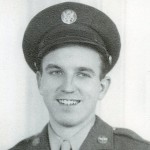
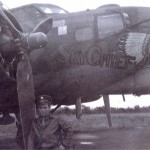 A number of years ago, I requested my dad, Staff Sergeant Allen Lewis Spencer’s military records from the National Personnel Records Center (NPRC) in Saint Louis, Missouri, only to be told that the records had been destroyed by a fire in 1973. I hadn’t heard about this before, and so really knew nothing about the details, except that I would never be able to find any more records of my dad’s military service during World War II, other than the ones we had, which was comparatively little. I wondered how it could be that the only military records for all those men were stored in one building, with no back up records. I know computers were not used as often, but there were things like microfiche back then. Nevertheless, the records were lost…and the loss felt devastating to me.
A number of years ago, I requested my dad, Staff Sergeant Allen Lewis Spencer’s military records from the National Personnel Records Center (NPRC) in Saint Louis, Missouri, only to be told that the records had been destroyed by a fire in 1973. I hadn’t heard about this before, and so really knew nothing about the details, except that I would never be able to find any more records of my dad’s military service during World War II, other than the ones we had, which was comparatively little. I wondered how it could be that the only military records for all those men were stored in one building, with no back up records. I know computers were not used as often, but there were things like microfiche back then. Nevertheless, the records were lost…and the loss felt devastating to me.
When I heard about the fire that destroyed my dad’s records, it all seemed like the distant past, but in reality, it was during my high school years. Then, it just seemed like a bad dream…a nightmare really. I couldn’t believe that there was no way to get copies of those records. My dad’s pictures, one of which was signed by the pilot of Dad’s B-17, on which Dad was a top turret gunner. Those pictures and the few records are all we have of his war years, and to this day, that makes me sad.
The fire broke out on July 13, 1973 and quickly engulfed the top floor of the National Personnel Records Center (NPRC). In less 15 minutes from the time the fire was reported, the first firefighters arrived at the sixth floor of the building, only to be forced to retreat as their masks began to melt on their faces. The fire was that hot!! There was just no way to successfully save the documents that were stored there. The fire burned out of control for more than 22 hours…even with 42 fire districts attempting to extinguish the flames. It was not until five days later that it was finally completely out. Besides the burning of records, the tremendous heat of the fire warped shelves while water damage caused some surviving documents to carry mold.

About 73% to 80% of the approximately 22 million individual Official Military Personnel Files stored in the building were destroyed. The records lost were those of former members of the U.S. Army, the Army Air Force, and the Air Force who served between 1912 and 1963. My dad joined the Army Air Force on March 19, 1943 and was discharged October 3, 1945. Many of the documents lost were from those years. They were gone, and there was no way to get them back. The National Personnel Records Center staff continues to work to preserve the damaged records that ere saved. There were about 6.5 million records recovered since the fire.
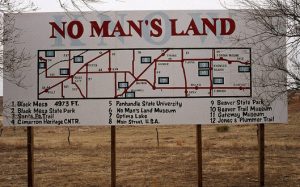 Little is known about the early life of William Coe, always known as “Captain” Bill Coe, except that he was a southern boy and worked as a carpenter and stonemason…until he turned to a life of crime, that is. It is believed that he fought with the Confederates during the Civil War, which is probably where he came to be known as the “Captain,” but there is no solid poof of this.
Little is known about the early life of William Coe, always known as “Captain” Bill Coe, except that he was a southern boy and worked as a carpenter and stonemason…until he turned to a life of crime, that is. It is believed that he fought with the Confederates during the Civil War, which is probably where he came to be known as the “Captain,” but there is no solid poof of this.
“Captain” Bill Coe arrived in the Oklahoma Panhandle about 1864, having decided to settle in that area. The area was referred to as “No Man’s Land”t that time. The strip of land, measuring some 35 miles wide by 168 miles long, was not included in any state and therefore left without any law and order. It was a haven for outlaws for years , and William Coe took advantage of that situation. Along a long high ridge jutting southwest from a large mesa near the town of Kenton, Oklahoma, “Captain” Coe built a “fortress” to protect himself and his gang of some 30 to 50 members, who primarily rustled cattle, horses, sheep, and mules. Coe’s headquarters, made of rock walls that were about three feet thick. There were portholes for protection rather than windows, as well as a fully stocked bar, living quarters for his men, and a number of ladies of the evening for their entertainment. Coe’s fortress became known as “Robber’s Roost.”
These men raided ranches and military installations from Fort Union, New Mexico to the south, Taos, New Mexico to the west, and as far north as Denver, Colorado to make their living. They also robbed freight caravans traveling along the Santa Fe Trail, as well as area ranches. Coe’s gang hid the stock in a canyon about five miles northwest of their hide-out. They built a fully equipped blacksmith shop, which contained all the tools necessary to maintain the herds, as well as changing the brands. When all hint of the previous owners were removed, the gang then moved the herds into Missouri or Kansas to sell. They got away with their lawlessness for several years…then they made a major mistake when they raided a large sheep ranch in Las Vegas, New Mexico in 1867, killing two men before making off with the herd to Pueblo, Colorado. They had been wanted men before, but these murders put Coe and his men on the “wanted list” like never before. Soon the U.S. Army from Fort Lyon, Colorado were pursuing them.
The Army attacked the Robber’s Roost fortress with a cannon. The walls crumbled like pebbles. The attack killed and wounded several of the outlaws. Though Coe and others were able to escape, several outlaws that weren’t killed in the battle were hanged on the spot, while others were arrested and taken back to Colorado. Coe continued his crimes and his freedom for about a year, hiding out in a small, now abandoned settlement of Madison, New Mexico, near Folsom. Then, while he was sleeping in a woman’s bunkhouse, her 14-year-old son rode from the ranch and contacted area soldiers, who soon returned and arrested Coe. The fugitive was then taken to Pueblo, Colorado to await trial and along the way, allegedly said, “I never figured to be “outgeneraled” by a woman, a pony, and a boy.”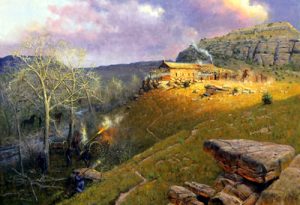
Before Coe could be brought to trial, vigilantes took matters into their own hands on the evening of July 20, 1868. They forcibly removed him from the jail, loaded him into a wagon, and hung him on a cottonwood tree on the bank of Fountain Creek, while he was still handcuffed and shackled. The next day, his body was discovered and buried under the tree that he was hanged from. Years later, when a new road was being built in the vicinity of Fourth Street in Pueblo, workers found the skeletal remains of what is believed to have been Coe’s.

